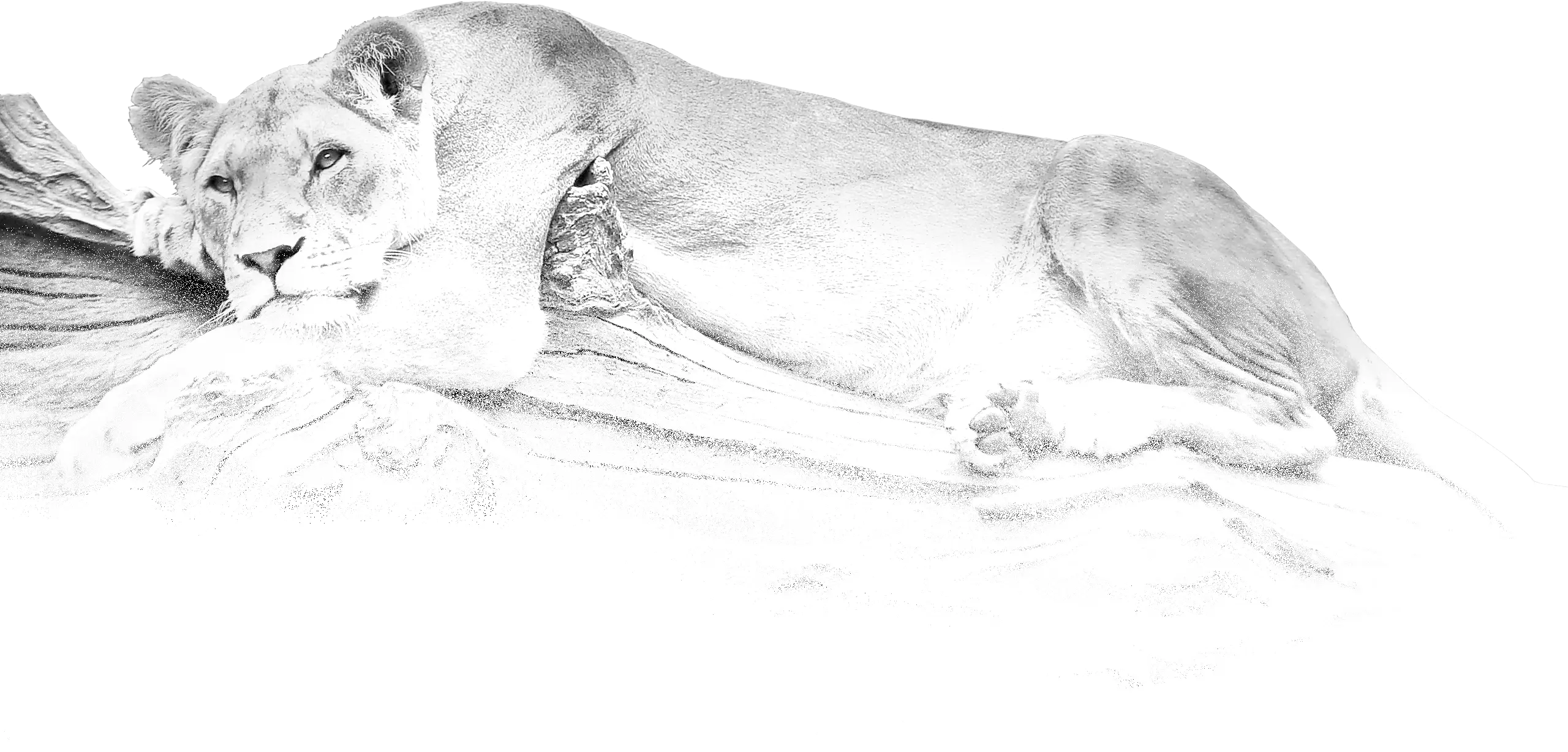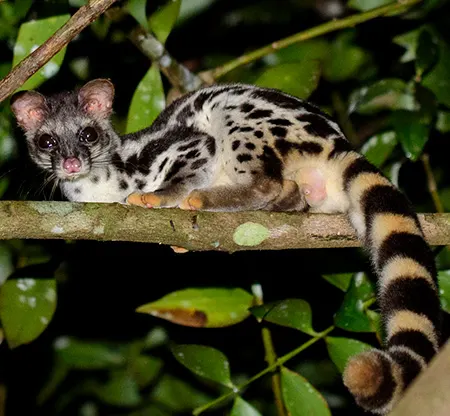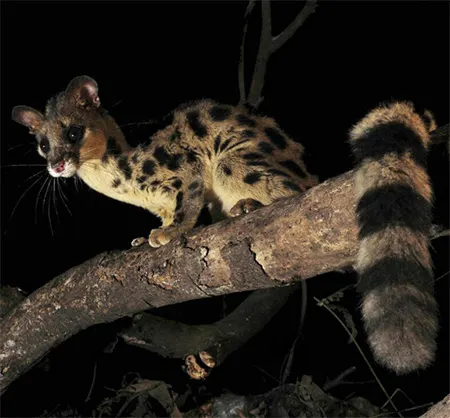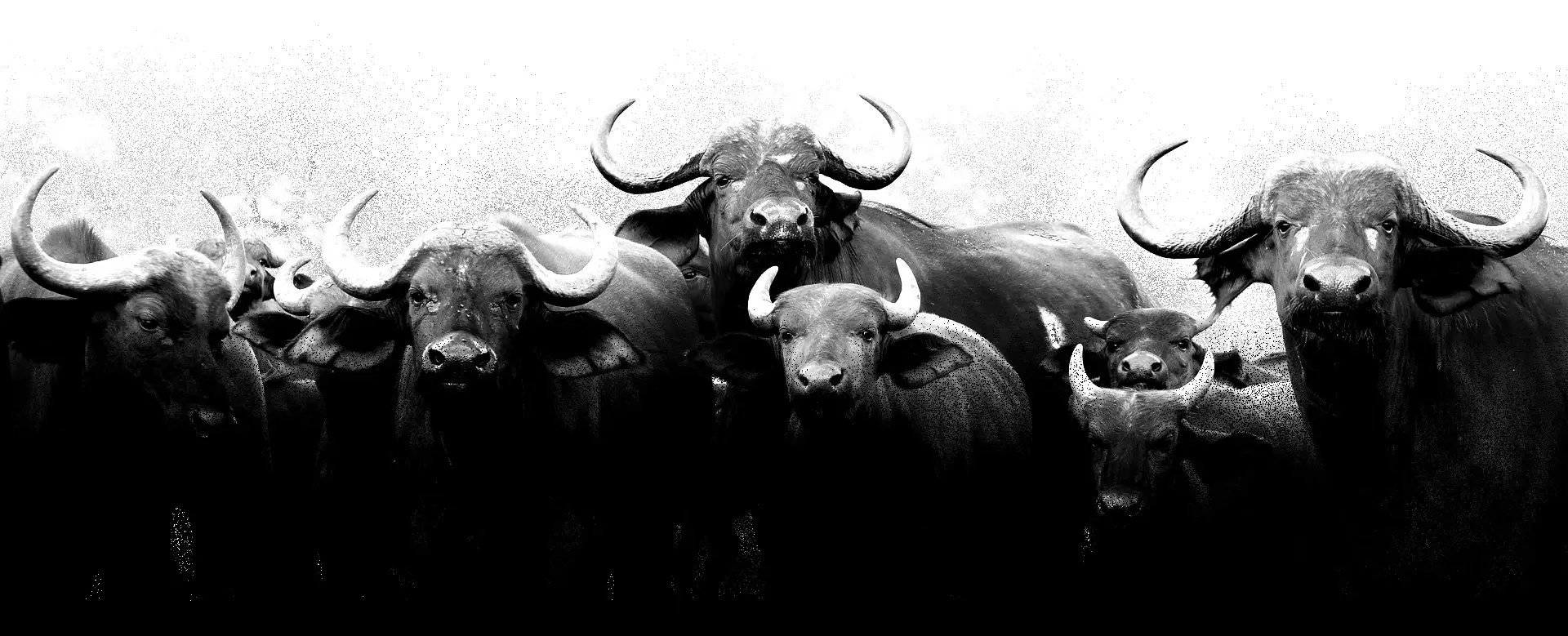
(Prionodontidae)
Linsangs
Лінзангові
Linsangs (Prionodontidae) is a family comprising two species native to Southeast Asia: the banded linsang (Prionodon linsang) and the spotted linsang (Prionodon pardicolor).
Spotted linsangs are primarily arboreal predators. Their sharp claws and long, thin bodies help them to run along branches. Although primarily arboreal, these animals also spend time hunting on the ground. They are nocturnal and spend the day sleeping in nests in tree hollows or under tree roots. The nests are lined with dry leaves and twigs. They are not thought to be social. Because of their shy and reclusive nature, little is known of them in the wild. Spotted linsangs feed mainly on rodents, but also eat birds, insects, small reptiles, frogs, eggs, and carrion. In addition to meat they are known to eat fruit.
Spotted linsangs have one breeding season in February and a second in August. Individual females can produce one or two litters per year. Although no details are available on the reproductive cycle of Prionodon pardicolor, the estrus cycle for banded linsangs (Prionodon linsang), a related species, is 11 days. Litters of two are common. Newborn weight for Prionodon linsang is 40 g. The young are hidden in tree or root hollows lined with dried vegetation, where they may stay until weaning. It is unknown if their mother teaches the young to hunt.

(Prionodon linsang)
Banded Linsang
Лінзанг смугастий
It is found in southern Myanmar, Thailand, Peninsular Malaysia, and the Sunda Islands of Borneo, Sumatra, Java, Bangka and Belitung Islands. It lives in tropical rainforests.

(Prionodon pardicolor)
Spotted Linsang
Лінзанг плямистий
It is found eastern Nepal, Sikkim, Assam and Bengal in India, Bhutan, north-eastern Myanmar, northern Thailand, Laos, northern Vietnam, and western Sichuan, Yunnan Guizhou and south-western Guangxi in southern China. It primarily inhabits evergreen forests and shrubland.

